Sci-Tech
Redmi 13 5G Review: The Best Budget Smartphone of 2024

It’s safe to say that the golden era of budget smartphones is long gone, with Xiaomi and Realme’s number series now operating in the sub-25K segment. However, this price push has left the biggest smartphone market—the 15K segment—in the dust, with people seemingly having no options. Therefore, when Xiaomi announced its new Redmi 13 5G smartphone, which packs a 120Hz display, 5G support, and HyperOS for Rs. 13,999, I was pretty excited to check it out. Now, after testing the smartphone for a week, let’s get into the review of the Redmi 13 5G and find out if the device is worth the hype.
Redmi 13 5G Review
Summary
The Redmi 13 5G has reignited the sub-15K segment by offering a good display, attractive design, and excellent battery life, along with 5G support. These features make the device a great option for price-conscious consumers.
Redmi 13 5G Review: Design and Display
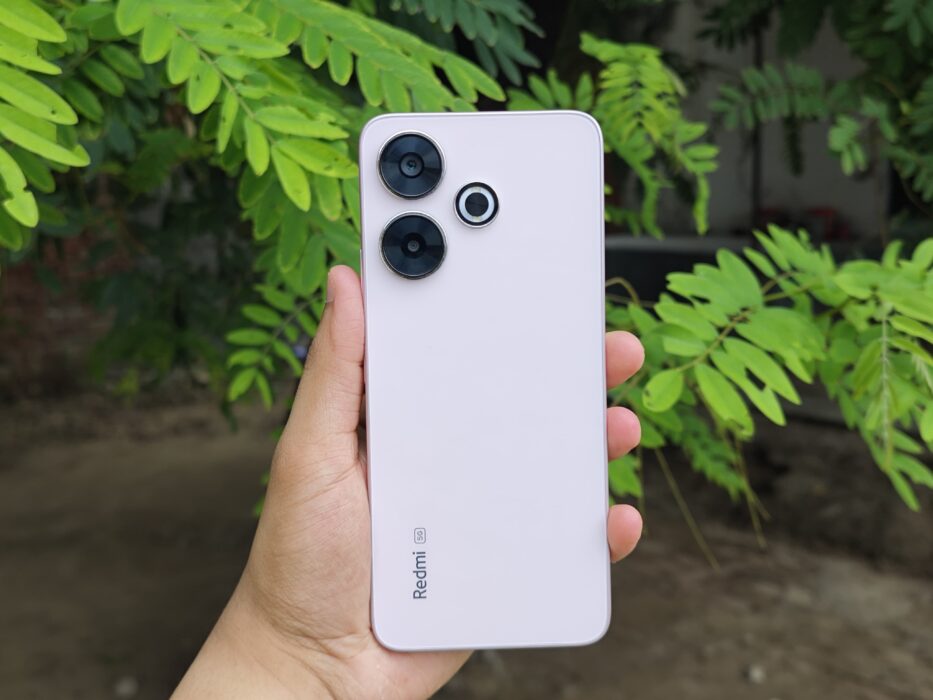
Despite the price, Redmi hasn’t skimped on any essentials, as the box includes the phone, a silicone case, a 33W fast charger, and a USB-A to USB-C charging cable.
Starting with the design, the Redmi 13 5G punches way above its weight by featuring a glass back panel, which makes the device feel premium. Coupled with the stunning pink colorway, it stands out. Moreover, it comes in two additional colors, Midnight Black and Ocean Blue, which could be a major selling point for Gen Z users who want their phones to look different.
The back panel also houses three cutouts: two for the cameras and one for the flash module. However, the company hasn’t specified which type of glass it uses on the back. The sides are made of plastic to help save money, but they feel sturdy and protect the device from impact.
In terms of in-hand feel, the Redmi 13 5G is 8.3mm thick, and coupled with the large display, handling the device can be a bit challenging.
Redmi 13 5G Review: Display

When Redmi launched the 13 5G, it talked greatly about the display and its size. But before I get into the nitty-gritty, the device features a massive 6.79-inch FHD+ 120Hz display with a peak brightness of 550 nits. Keen observers might notice that I didn’t mention OLED in the display specs. That’s because the device has an LCD panel.
After years of being spoiled by OLED displays, using an LCD panel was a trip to a bygone era, with washed-out colors, a lack of contrast, and things not looking as sharp as they should. However, keeping my biases aside, the LCD on the Redmi 13 5G is one of the better ones I’ve seen, with good color accuracy and details. Watching movies and gaming were also enjoyable experiences on the display.
Although we can cut some slack for Redmi not using an OLED display due to price constraints, the peak brightness of just 550 nits limits the device’s usability in direct sunlight.
Finally, regarding display protection, the Redmi 13 5G uses Corning Gorilla Glass 3, which, in my testing, fared well when I accidentally dropped the phone on a hard surface.
Redmi 13 5G Review: Performance
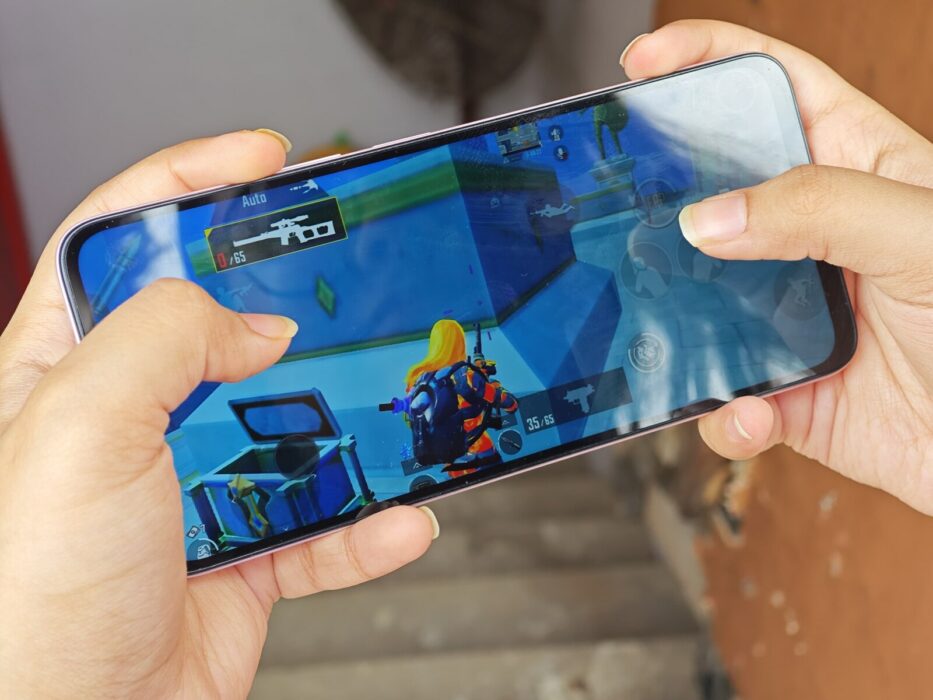
The Redmi 13 5G houses the new Qualcomm Snapdragon 4 Gen 2 chipset, which consists of two Cortex-A78 cores running at 2.2GHz and six Cortex-A55 cores running at 2GHz, along with the Adreno 613 GPU. Additionally, the device comes with up to 8GB of LPDDR4X RAM and 128GB of UFS 2.2 internal storage.
In terms of real-world performance, if you’re looking for the most powerful phone in this segment, the Redmi 13 5G is not it. The company claims 36 months of lag-free usage, but I encountered some lag when switching between apps on the first day of my testing. Moreover, every task, whether opening or closing an app, takes a second to process. While this might not be noticeable for the average user, it will definitely cause some frustration for those expecting better performance.
This bittersweet trend continues in gaming, where I tested the device on BGMI and CODM. Beginning with BGMI, the handset maintained 30FPS on “HD” graphics and a high frame rate setting. On the other hand, the 13 5G delivered solid 45-50FPS gameplay in CODM at high settings.
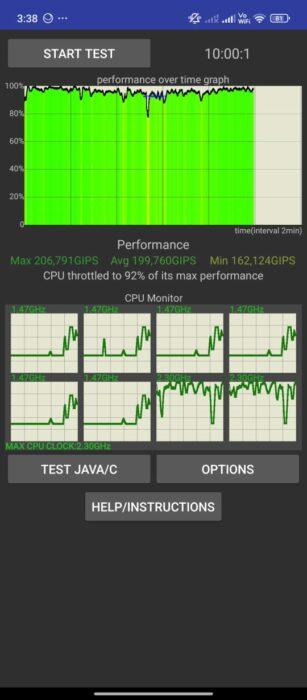
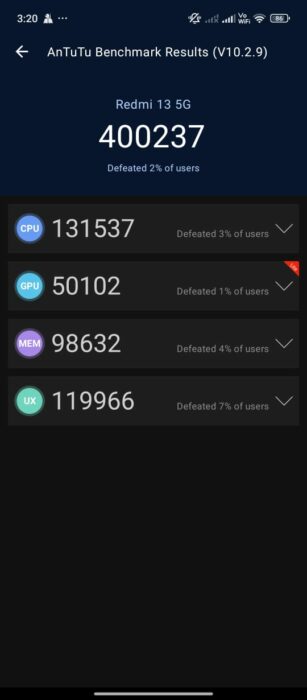
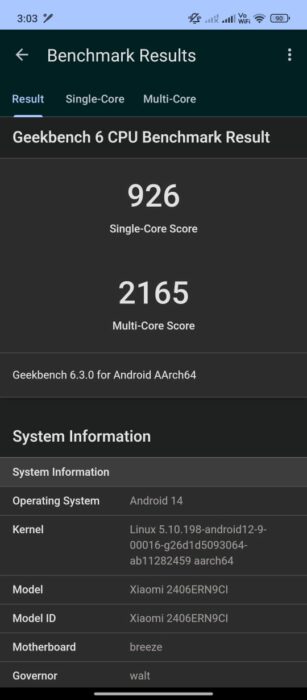
Regarding synthetic benchmarks, I put the Redmi 13 5G through its paces in Geekbench’s single-core and multi-core tests, where the device scored 926 and 2165, respectively. Additionally, in the AnTuTu benchmark, the handset scored 400237 points. Finally, to test the thermal performance, I ran the 10-minute 30-thread benchmark, during which the 13 5G throttled to 92% of its performance and became hot to the touch.
Battery Life
Given the massive 5,030mAh battery, I had high expectations for the Redmi 13 5G’s battery life and wasn’t disappointed. The device easily lasted a full day of average use, including watching YouTube videos, taking camera samples, and scrolling through Instagram. Moreover, with the included 33W charger, I could recharge the phone from 20% to 100% in just over an hour.
Redmi 13 5G Review: Cameras

The Redmi 13 5G features a dual camera setup on the back, comprising a 108MP Samsung ISOCELL HM6 sensor and a 2MP depth sensor. The photos turned out well in daylight, with good details, vibrance, and sharpness. While the colors tend to be on the punchy side, many everyday users prefer enhanced colors, making the photos look pleasing.



Considering the lack of a telephoto lens, the primary camera also doubles as a portrait lens. The resulting shots in daylight were acceptable, with a natural depth of field and good colors. However, the quality dropped significantly at night when the phone struggled to separate the foreground and background effectively.


Nighttime photos
As expected, the Redmi 13 5G’s photo quality suffers at night, causing the shots to look washed out, with fewer details and more grain. However, it’s worth noting that every phone in this price segment struggles with nighttime photos, so this isn’t a major dealbreaker.
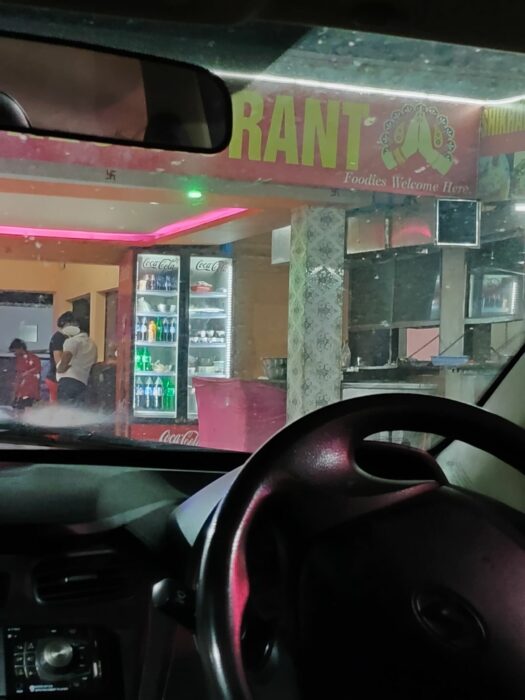

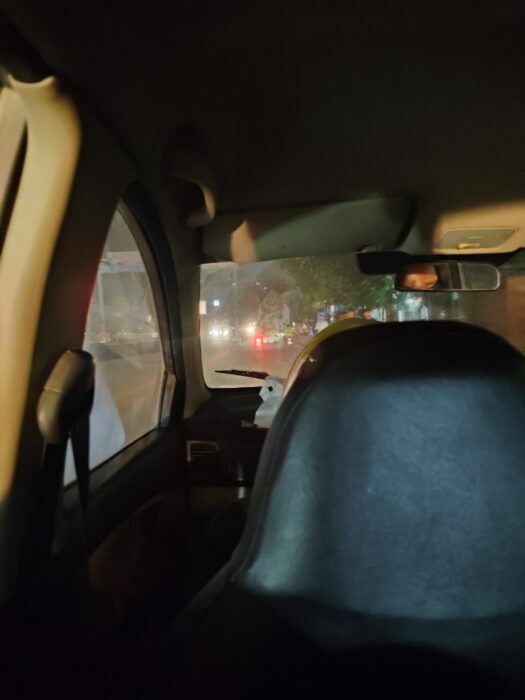
Selfies and Videos
The 13MP selfie shooter performed better than expected, delivering great clarity and colors. However, like many phones, the device applies a beauty filter to the photos, which might be a bit overwhelming for some users.

Finally, the fact that the Redmi 13 5G can only record 1080p@30fps videos is a disappointment since there is no option to record at a higher frame rate. Nevertheless, the video quality in daytime conditions was acceptable, with decent stabilization, sharpness, and good colors.
Redmi 13 5G Review: Software
The 13 5G is Redmi’s first phone to run the all-new HyperOS out of the box. Despite the performance issues caused by the chipset, my overall experience was positive. The theme and icons look attractive and provide a good user experience. However, as you might expect, the device comes with a plethora of pre-installed apps and games, along with the infamous “Hot Apps” folder, which does hamper the experience. Fortunately, you can uninstall these apps and clean up your experience.
Regarding software support, Redmi has promised two years of major software updates and four years of security patches, which significantly improves the phone’s longevity.
Should you buy the Redmi 13 5G?

Starting at Rs. 13,999, the Redmi 13 5G is one of the few contenders in the 15K segment. With a good display, attractive design, and adequate battery life, it gets a thumbs up from me. If you’re looking for a solid phone in this segment, be sure to check out the Redmi 13 5G.
Read More
Sci-Tech
Cristiano Ronaldo first to hit 1bn social media followers

Cristiano Ronaldo has hit 1bn total followers across his various social media accounts – making him the first person to reach that mind-boggling figure.
The number is calculated by combining his total number of followers across Instagram, Facebook, Twitter, YouTube, and Chinese social media sites Weibo and Kuaishou.
It does not equate to one billion individual followers, as many people will follow him across multiple platforms, and some will be fake accounts, known as bots.
Nonetheless social media expert Paolo Pescatore, from PP Foresight, described it as a “staggering number” that media and brands would pay close attention to.
“What an achievement, and it further underlines the fundamental shift taking place in media.”
It showed “the power to reach new, younger audiences thanks to technology”, he told the BBC.
On the pitch, Ronaldo was famed for his rivalry with Argentinian star Lionel Messi.
But off it, there is no competition for who is winning the social media contest – Messi has a mere 623 million followers.
Some of the other celebrities with the biggest presence on social media are:
- 690m: Selena Gomez, actor/singer
- 607m: Justin Bieber, singer
- 574m: Taylor Swift, singer
Other notable names the BBC looked into include The Rock (557m), Kylie Jenner (551m ) and Ariana Grande (508m).
MrBeast, the top YouTuber in the world, has 543m total followers, while WWE, often considered to have an enormous social media presence, can only point to reaching a quarter of the audience of Cristiano Ronaldo with 268m combined followers.
The footballer will have reached this milestone thanks to his decision to join YouTube last month, where his channel rocketed to 50 million subscribers within a single week.
So far, the channel consists mainly of conversations between Ronaldo and his wife Georgina Rodríguez, as well as his former Manchester United colleague Rio Ferdinand.
He announced the news in a post shared across his various social media platforms.
Cristiano Ronaldo has made a career out of breaking records.
His successes include being top scorer in Uefa Champions League history, having the most goals in the European Championship, and making more international appearances than anyone else.
Last week he became the first footballer to score 900 top-level career goals.
As with his playing career, he still has scope to improve his numbers on social media too, as unlike some of his rivals, he is not on TikTok or Threads.
All of which is likely to add to another figure he dominates: earnings.
According to Forbes, his total earnings now stand at $260 million – the highest of any athlete.
Sci-Tech
Musk and Zuckerberg have ‘polluted culture’

Meta boss Mark Zuckerberg and X owner Elon Musk are “the worst polluters in human history”, Stephen Fry has said.
The actor and comedian made the claim during a lecture at Kings College, London.
“You and your children cannot breathe the air or swim in the waters of our culture without breathing in the toxic particulates and stinking effluvia that belch and pour unchecked from their companies into the currents of our world,” he said of the pair.
The BBC has approached the two men’s companies for comment.
Mr Fry has a track record of being an early adopter of technology – and was once a regular poster on X, when it was known as Twitter.
He stopped posting in 2022, a few months after the platform was purchased by Mr Musk, but has retained his account. He is no longer active on any social networks.
“I’m the chump who thought social media could change the world,” he told his audience at the Digital Futures Institute.
He said he was at first enthusiastic about the potential of social media to unite people around the world and bring about positive change in society, citing the Arab Spring protests which were coordinated online as an example – but added that he had been proved wrong.
He described what he considered to be a fatal flaw in attempts by early Facebook algorithms to “maximise engagement”, saying nobody had predicted that engagement would be “most maximised by… the worst passions” such as anger, shock and horror.
“We are decidedly hopeless at knowing where technology will take us or what it will do to us,” he said.
He returned to the theme several times throughout his one hour speech, in which he also considered the future of artificial intelligence.
Mr Fry argued that AI was “poised to disrupt every space we have”.
He said he hoped corporate greed would not corrupt the development of AI tech at the expense of safety.
“The best I can do is this – Einstein and Russell said in their manifesto on nuclear weapons – we appeal as human beings to human beings, remember your humanity and forget the rest,” he said.
Mr Fry’s broadside was not the only attack on Mr Musk.
Earlier on Thursday, senior Meta executive Sir Nick Clegg, talking at Chatham House, in London, had been similarly scathing of Mr Musk’s platform X.
The former deputy prime minister called it “a tiny, elite, news-obsessed, politics-obsessed app” and added that in his view the social network had become “a one-man hyper-partisan hobby horse.”
In March 2024 X claimed to have 550 million monthly visitors. Facebook has just over 3bn.
Additional reporting by Liv McMahon
Sci-Tech
Vodafone clashes with UK’s competition watchdog over Three merger

Vodafone and Three have rejected claims by the UK’s competition watchdog that their proposed merger would lead to higher prices for millions of mobile users.
The Competition and Markets Authority (CMA) has “provisionally concluded” the deal would weaken competition between mobile networks.
It has particular concerns that customers who are least able to afford mobile services would be most affected.
The findings are the latest from the CMA’s ongoing probe into the merger, which it launched in January.
The regulator will now consult on its findings and potential solutions to its worries over competition.
These solutions could include legally binding investment commitments, and measures to protect both retail and wholesale customers.
Vodafone’s CEO for European Markets, Ahmed Essam, told the Today programme, on BBC Radio 4, that he still believed the merger would make a better network for customers, and add to the competition in the market.
“We’ve made a significant commitment to an £11bn investment,” he said.
“We’re willing to make sure that this is legally binding, and we undertake a commitment to deploy this.”
He also said the firm had already traded part of its radio spectrum with a competitor.
But the CMA said it is “not convinced” that it would be good for consumers.
“The main knockback to the merging parties is that the CMA considers claims of superior network quality post integration to be “overstated”,” said Kester Mann from analysis firm CCS Insight.
But he said the regulator was not shutting the door on the deal.
“Vodafone and Three should be encouraged by the tone of the CMA’s report, which appears more open to the merger than I was expecting.”
But Rocio Concha, director of policy and advocacy at consumer group Which?, took a different view.
“The regulator’s finding has set a high bar for the merger to proceed,” she said.
“It is clear from those findings that the planned merger between Vodafone and Three could have a negative impact on millions of consumers.”
But she warned it would be “challenging” for the regulator to find remedies for its concerns.
Vodafone and Three revealed plans to merge their UK-based operations in June last year, creating the biggest mobile network in the UK with around 27 million customers.
But the CMA provisionally concluded on Wednesday that such a deal would lead to a “substantial lessening in competition”.
In addition to worries over price and service levels, the regulator is also concerned that the deal may make it more difficult for smaller players such as Lyca Mobile, Sky Mobile and Lebara – who rent space from the bigger operators – to get a good deal.
Vodafone and Three have said the tie-up would lead to an additional investment of £11bn in the UK.
The CMA found that a merger of the two could improve the quality of mobile networks and accelerate next generation 5G networks and services, as claimed by the companies.
But it considered these claims were “overstated”, and that the merged firm would not necessarily have the incentive to carry out planned investment after the merger.
In a statement, Vodafone and Three said they disagreed with the CMA’s findings.
“By all measures, the merger is pro-growth, pro-customer and pro-competition. It can, and should, be approved by the CMA,” they said.
The CMA will issue a final report into the deal in December.
The firms added they would be working with the regulator to secure approval for the tie-up.
-

 African History5 years ago
African History5 years agoA Closer Look: Afro-Mexicans 🇲🇽
-

 African History8 months ago
African History8 months agoBlack History Facts I had to Learn on My Own pt.6 📜
-

 African History5 years ago
African History5 years agoA Closer Look: Afro-Mexicans 🇲🇽
-

 African History1 year ago
African History1 year agoMajor African Tribes taken away during the Atlantic Slave Trade🌍 #slavetrade #africanamericanhistory
-

 African History1 year ago
African History1 year agoCameroon 🇨🇲 World Cup History (1962-2022) #football #realmadrid #shorts
-

 African History1 year ago
African History1 year agoWhat did Columbus Find in 1493? 🤯🔥🔥 #history #civilization #mesoamerica #africa #kemet
-

 African History8 months ago
African History8 months agoBlack History Inventors: Mary Kenner 🩸
-

 African History1 year ago
African History1 year agoOrigin Of ‘Cameroon’ 🇨🇲😳#africa






























